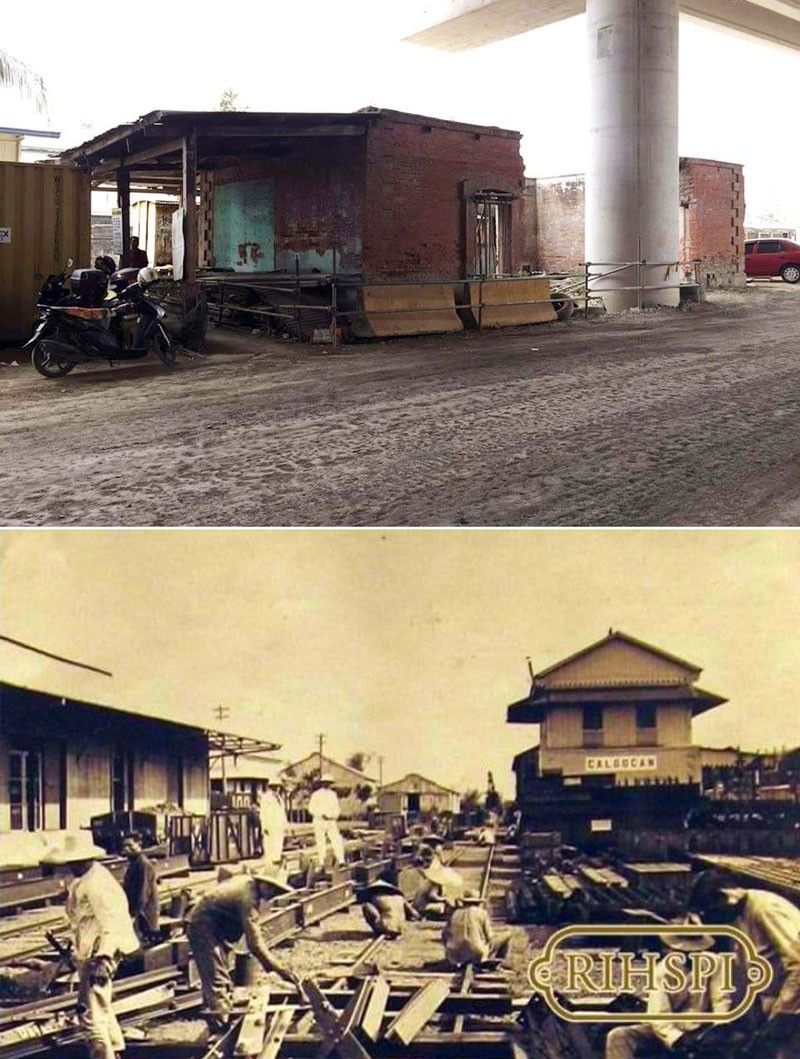Spanish-era train station demolished in Caloocan

MANILA, Philippines — Heritage advocates renewed their call to convert a Spanish-era train station in Caloocan to a museum, after a portion of its wall was destroyed to give way to a segment of the North Luzon Expressway (NLEX) extension.
The train station dates back to the first railway system in the country, established by the London-based Manila Railways Co. (MRC), the predecessor of the Philippine National Railways (PNR).
The station’s wall was demolished so a post of the NLEX Harborlink, an elevated highway running from Manila to Marulas in Valenzuela, could be erected. The Harborlink cuts the travel time for trucks coming from Manila’s port to northern Metro Manila.
“They should have increased the height of the highway so that the post can be put somewhere else,” said architect Wilmer Godoy of the National Historical Commission of the Philippines (NHCP) historic preservation division. “But we were told they could not do that because there is a timeline to meet.”
PNR general manager Junn Magno told The STAR that it was lamentable the Harborlink segment was built over the old station in the rush to erect the foundations.
Link to history
With the destruction of the wall came the demolition of its history.
The old Caloocan station was used by Aguinaldo’s ill-fated general, Antonio Luna, in sending telegrams during the war, Magno said.
According to Arturo Corpuz in his book “The Colonial Horse: Railroads and Regional Development in the Philippines 1875-1935,” the MRC was established with Thomas Higgins as general manager in the late 19th century as part of the worldwide trend of technological advances in transportation.
The MRC cooperated with Emilio Aguinaldo’s revolutionary government until the railway system was taken over by the American forces. The firm even paid revolutionary taxes, according to the book.
The old Caloocan station was a key entry point of the Manila-Dagupan line between the north and central Luzon, a key “geographical axis about which the war was initially fought” especially because several skirmishes erupted in Luzon, the book stated.
In an Aug. 31, 1898 general order in response to Higgin’s request to continue operations despite the war, Aguinaldo ordered his troops to guard the Caloocan station and inspect the trains, with the old Caloocan station as a key entry point to the north.
“The military role of the Manila-Dagupan railroad ... was most significant at the turn of the century, when it was an influential element of events that led to and shaped the geography of the Philippine-American war,” Corpuz said in the book.
Damage
The Harborlink segment violated the five-meter buffer zone for heritage structures 50 years and older under the law despite consultations between the NHCP and the concessionaire to spare it, according to Godoy.
Fortunately, the old MRC office in front of the old station – the Thomas Higgins Hall, named after the first general manager – was spared, although the highway was built just inches away from the heritage building, subjecting it to the risks of vibration from passing vehicles.
In a television interview, Public Works Secretary Mark Villar said he will look into the reason why the heritage structure was destroyed.
“We’ll be investigating what happened. If there is any flaws in the procedure, we’ll act on it,” Villar said in a television interview.
The old Caloocan station can still be saved, Godoy said, perhaps as a museum, because the three other walls and the bricks from the demolished wall remain just waiting to be preserved under the shadows of the Harborlink segment.
“We always recommend to them to make use of the old station, to incorporate it in the new development. It could function as a station or maybe a museum,” Godoy said.
“We have to create awareness about heritage structures, so that it can be preserved for the next generation to appreciate,” Magno added.
- Latest
- Trending

































